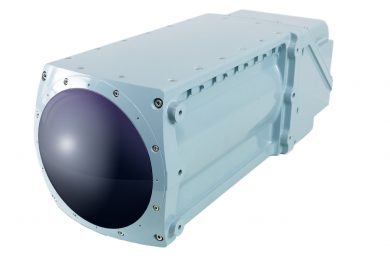
PAS 2025 – LBA Systems, Leonardo and Baykar join forces to expand their footprint on the UAV market
Based on the consideration that their respective portfolios are fully complementary, Leonardo and Baykar created a Joint venture, LBA Systems, which will produce integrated unmanned systems and will exploit the commercial networks of both mother companies
“Today we sign the creation of a joint venture between Baikar and Leonardo for the new generation of unmanned systems that we plan to produce in a short time. It was a very fast story. A few months ago we found an unprecedented high complementarity between the technology portfolio of the companies as well as of a common spirit. I think there is a gap within the NATO and the rest of the world, particularly in Europe, for drones. We decided to join forces to integrate our payloads, what kind of sensors, organisation, command and control, with the platforms that Baykar has been developing, becoming soon the first in the world. And we will start the production very soon,” this was the very short introduction that followed the signature of the JV document by Roberto Cingolani, the CEO of Leonardo, and Selçuk Bayraktar, Chairman and CTO of Baykar Technologies, that took place on Day 1 of the 2025 edition of the Paris Air Show.

The JV structure, named LBA Systems, will be very light, less than 20 people, the two speakers explained, while they announced that Haluk Bayraktar, the CEO of Baykar, was appointed as Chairman of the JV while the CEO is Francesco Sabatini, head of Market and Competitive Intelligence at Leonardo. The LBA Systems headquarters will be in Italy; no new plans nor investments had to be made, the 50/50 operation relying on 100 per cent complementarity between the two company’s portfolios.
The signature was anticipated by a MoU, signed in March 2025, but now the schedule is much clearer, Cingolani said. “Currently our teams are already committed on the integration of the payloads, sensors, flight control systems, radar, avionics, and other subsystems into the various platforms developed by Baykar, and in particular on the TB-3,” he said, adding that the LBA Systems aims at demonstrating an autonomous landing on the Italian Navy aircraft carrier “as soon as possible”, possibly by year end. “This will be very important demonstration for the effectiveness of our effort,” he underlined.
LBA Systems will prepare the newly integrated UAVs for certification, the process being conducted in Italy. Three Italian facilities will be involved; that of Ronchi dei Legionari, close to Trieste, the historical home of Italian drones once named Meteor, that of Grottaglie, close to Taranto, involved in commercial aircraft composite elements production, which will have a role also in research and development in such materials, EDR On-Line understood, and the Piaggio Aerospace site of Albenga, close to Genova, the company having been acquired by Baykar in late 2024.

Certification will be carried out in Italy, which will be a facilitator in expanding the market to European countries. The certification for the LBA Systems TB-3 is expected to be completed by 2026, this year also marking the first deliveries. The two companies are operating on different markets, a complementarity being found also here, although the two speakers were clear in saying that the business plan is still under construction.
On the Leonardo static display two UAVs with the LBA Systems marks were visible, a TB-3 and an Akinci, which allowed the JV to showcase the integration of Leonardo systems on Baykar platforms. Two panels were detailing the potential systems proposed to customers. Starting from the TB-3, standard on-board systems will be the LEOSS-T multi-sensor gimbal, the Brite Storm jammer, the SRT-800 software defined radio, and the IFF 428 transponder. Among other sensors proposed to customers we find two radars, the Gabbiano 80UL, for ultralight, and the Osprey 20/30, the SAGE digital ESM/ELINT system, and the ULISSES anti-submarine warfare operations, while two mission management systems are offered, one from Baykar and one from Leonardo, which are also proposed for the heavier twin-engine Akinci. Compared to the TB-3 the Akinci features Grifo-E radar at the front. As for optional equipment, beside the Gabbiano 80UL and the SAGE we find the Osprey 55/30 and the Seaspray 7500 radars, the Skyward IRST, the SIT 436 IFF interrogator, and the MAIR missile system.
Asked about the decision to develop its own propulsion systems, Selçuk Bayraktar underlined that it was sometime difficult for subcontractors to cope with Baykar production rate, especially for the Kizilelma combat UAV, hence the decision to become autonomous.

Considering the future, available forecast put the market potential in the next 10 years, at 100 billion US$, so the new Italian-Turkish JV, which started thanks to a visit by Leonardo to Baykar facilities in October 2024, has definitely room for manoeuvre.
It is always better to build partnerships that fighting each other, the two speakers underlined, and LBA Systems wants to prove it. “We have structured the JV in such a way that we aim to lead the way in terms of innovation in the whole military unmanned aviation. We don’t put any limit on future synergies. Not only in unmanned systems, but also in other possible systems, this of course on a long time scale,” they concluded.
Photos by P. Valpolini


